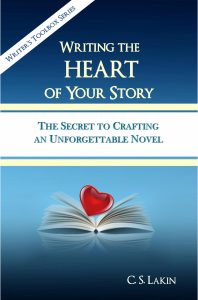Scene Structure: Endings—Inevitable or Unpredictable?
For this week’s Throwback Thursday, we’re looking at excerpts from past posts on Live Write Thrive that tie in with our exploration on scene structure.
From The Inevitable Ending You Know Is Coming:
As contradictory as this might sound, endings in novels need to seem inevitable without being predictable. When your reader finishes the book , she should feel that this was the only way it could have ended. Everything has led up to this finale, and it just plays out perfectly. This isn’t predictability. You don’t want readers thinking they knew exactly what was going to happen and are bored as they hurriedly flip through the last pages of the book.
Recently I read a couple of award-winning sci-fi novels that were really pretty good until about the last fifty pages. I found myself starting to skim through the inevitable spaceship battles and the endings—to the point that I didn’t really read the last chapters. Such a difference from Orson Scott Card’s masterpiece Ender’s Game, considered one of the all-time greatest sci-fi books written (and I agree!). The surprise twist at the climax and the completely unexpected ending blew me away. Yet, I could say it was the best (and truly only) ending for the book, and entirely unpredictable.
Inevitable but Predictable?
It’s okay for readers to know what is going to happen (boy gets girl; Frodo destroys the ring), but they don’t know how. You want enough surprises and twists that the reader is thrilled, but you don’t want them throwing that book across the room upset that your ending makes no sense.
One writing instructor calls the ending a “debriefing.” I like to think of it as a camera pull-back in a mental way. This is where the protagonist shifts her focus from the small scope of the events in the climax to the larger purview of processing what she just went through, the decision she made, the changes she experienced, and who she is now. It’s as if her gaze is wider and deeper as she looks at her new place in the story with better vision and understanding. There is a sense of an “I see now and I understand” feel.
Reduce to the Bare Essence
I mentioned this line in my last post: “Get in quickly; get out quickly.” There should be a sense of boiling everything down to its purest essence. Every word of dialog, every line of description, should truly count. The end is no place for excessive narration, pontification, explanation. This is where you show a memorable moment with your character, a short but important one.
Think of a dramatic play in which the narrating character sums up the story (I’m picturing Hamlet) after all has been said and done. You don’t want to do this exactly—jumping in as the author and summing up the story they just read—but you do want to give the feeling that things are being wrapped up.
In Conundrum, after my protagonist, Lisa, learns a shocking truth (big plot twist/surprise) about her long-dead father, whom she has been trying to learn about throughout the course of the novel, she sits in her living room on New Year’s day (hinting at new beginnings, as she is also, finally, pregnant—another new beginning).
I bring in some of the motifs I’ve been using in the book, phrases and ideas used in important places that hold a lot of meaning for her, so as she reflects on where she is, what she’s learned, how she now feels, and what she hopes for the future, it all plays out in just a few short paragraphs, reprinted below [I’m going to boldface the repeated phrases and motif used since you won’t know what they are]:
A great sigh broke loose from inside me. I had come to the end of my father’s story; I had navigated this convoluted maze and now where did that leave me? What had compelled me, those months ago, to uncover the clues to his death? Some crazy notion that I could help Raff? Where had that come from?
Perhaps my buried memories of my father, a man who had imprinted his goodness and love on my heart so long ago, had nudged me toward truth. Toward a need to vindicate him somehow, clear his name of the false labels slapped upon him: cowardly, suicidal, heartless. I had supposed that if I searched for him, searched hard, I could find him. And I did. At least, I believed I did.
It struck me that I had no idea where my father was buried. In Los Angeles somewhere? Or would his family have buried him in New York? I made a mental note to call my uncle Samuel and ask. I was long overdue to pay my respects. Although, my father seemed more buried in my heart than in some cemetery plot.
Jeremy came into the living room and sat beside me. He looked out the window at the winter morning, at the garden that lay dormant, the rose bushes cut back, leafless, stunted. I gazed at the alders across the street, their spindly bare arms outstretched to the heavens. They seemed to be yearning for spring.
“What a beautiful day,” he said, stroking my hair. “A new year. Full of promise.”
He looked down at my belly and smiled at the life growing inside me. I felt strangely sad and joyous at the same time. And although I felt heavy with my pregnancy, heavy with anticipation and, admittedly, a little fear and worry over what the future held, something lifted off my heart. Some burden, a reprieve of sorts.
For years I had carried around my own poisonous guilt—for my failings as a dutiful daughter, my inability to make my mother happy, my lack as a wife. Even guilt over my miscarriages, as if I had done something wrong, so that I didn’t deserve to have children. And now, after having found my father, Nathan Sitteroff, these self-recriminations were dissolving. I felt light, as if flying.
I looked at Jeremy, the only man I had ever loved, oh so loved, and my heart soared like a helium-filled balloon escaping into the sky. I thought of the man in the restaurant—the man who had spent the better part of his life looking for answers. Looking for truth.
I’m free, he said.
I mouthed the words along with him.
That’s how my book ends. The book begins with that specific conundrum of the man in the restaurant saying he is free, a man who is symbolic of Lisa and this journey of her life that has finally brought her to a place where she, too, feels free. The line about the only man she’s ever loved “oh so loved” is an exact quote from the end of chapter one.
When you can pull bits like this from your opening scene that are thematic to your story, they bring the novel around full circle and give the reader a sense of completion.
One thing to note: Lisa started off with one visible goal—to uncover the mystery surrounding her father’s death, but in the end, she arrived at a completely unexpected place. You may decide your character won’t reach her goal at all, but if not, there must be something invaluable she learns through the effort and makes the journey (and the ending of your novel) inevitable but not predictable.
If you’re interested in more about scene structure, be sure to subscribe to Live Write Thrive so you don’t miss the posts. Mondays we’re going deep into scene structure, and Wednesdays we’re looking at first pages of great novels to see why they work. Join us!
 Want to learn how to get to the heart of your story? Learn how to reach readers’ hearts with this unique writing craft book.
Want to learn how to get to the heart of your story? Learn how to reach readers’ hearts with this unique writing craft book.
Some novelists write with the goal of becoming a best seller, hoping for wealth and fame. Some just want to write novels that earn them a steady income so they can feed their families and pay their bills. Some write to express their creativity and don’t care if anyone ever reads their books.
Then there are the other writers. They want to write an unforgettable novel–the kind of book that gets called a classic, that endures the ravages of time, that stays long in readers’ hearts and changes their lives.
These writers want to know the secret of how to reach the heart of their readers.
The excerpt in this post is just a peek at what’s inside this book.
If you are one of those writers, Writing the Heart of Your Story is the book you’ve been waiting for.
“A veritable compendium of sound writing advice and technique. Written in a style that is both accessible and fun, Lakin’s book will be a welcome companion on your writing journey.”
— James Scott Bell, best-selling author of Conflict and Suspense and Plot and Structure
“C. S. Lakin’s addition to the vast oeuvre of ‘how to write a novel’ wisdom is just that–a fresh and motivating take on conventional wisdom, but with unconventional heart. This is highly accessible teaching that transcends ‘how to’ and goes deep into ‘why to’ in a way that will force you to choose between reading it again and jumping on your own project. Bravo.”
—Larry Brooks, author of Story Engineering, and blogger at Storyfix.com
“C.S. Lakin’s Heart of Your Story offers all the techniques a writer needs to pull readers deep into the story and provide a rich, meaningful experience that will last far beyond the final page. So much more than a ‘how-to’ on writing, this book opens a pathway into the writer’s inner self, allowing them to draw from personal complexities that will supercharge their characters with depth. Accessible to all levels, this must-have resource will transform writing from good to exceptional.”
—Angela Ackerman, author of The Emotion Thesuarus
This is one of the best, if not THE best book I have ever read about writing, and I have read dozens of them. Susanne writes from the heart and in this wonderful book, she teaches the rest of us how to do it. If you are an aspiring writer, you need to have a copy of this book and you need to read it several times, and take notes. You will learn how to create real characters who have real emotion and motivation, but be careful — in order to do this, you will have to learn to experience these emotions for yourself and then describe them on paper. The Heart of Your Story comes from your heart.
Get your copy in print or ebook here!
Photo by Josh Felise












I definitely agree with reducing to the bare essence, making every line count. One of my big peeves is where writers do a constant rehash, through the MC’s mind, what’s going on.
In a romance the FMC may be telling herself every few pages just why the MMC is no good (for her) and how she must stop thinking about him. While the male MC is doing the same on his allotted pages. In some cases taking these musings out would remove a good third of the book because there’s so little actual story going on.
In some of the cozy mysteries I’ve been reading lately, the FMC sleuth gets regular exercise jumping to conclusions, and drags readers along. Every few pages she gets some new clue, may add a suspect — often based on the flimsiest ‘evidence’— then has to go over the whole list of possibles again.
So we read yet again, “The butler could have done it; he had access to the murder weapon. But Sir Wince was at the scene and could have done the deed, too. And the maid had opportunity to do it. But the business partner had also quarreled with the victim…”
I like to see reasons and/or evidence presented, but I don’t like to see an MC self-talking and/or jumping to conclusions over and over. I’m not deaf; I heard her the first time! I guess the writer is hoping to jack up the tension but IMO the MC ends up sounding like a clueless or fickle scatter-brain.